Grazing with milking robots - revisited after 2 years
Milking with dairy robots has polarised opinion, with some opposed to housing cows all year and others eulogising about how robots have helped overcome labour problems. However, with installations rocketing, is there a way to see this technology combined with traditional grazing? DeLaval introduced its three-way (A, B, C) robot grazing system more than two years ago and one of the system’s early adopters received an award in 2024.
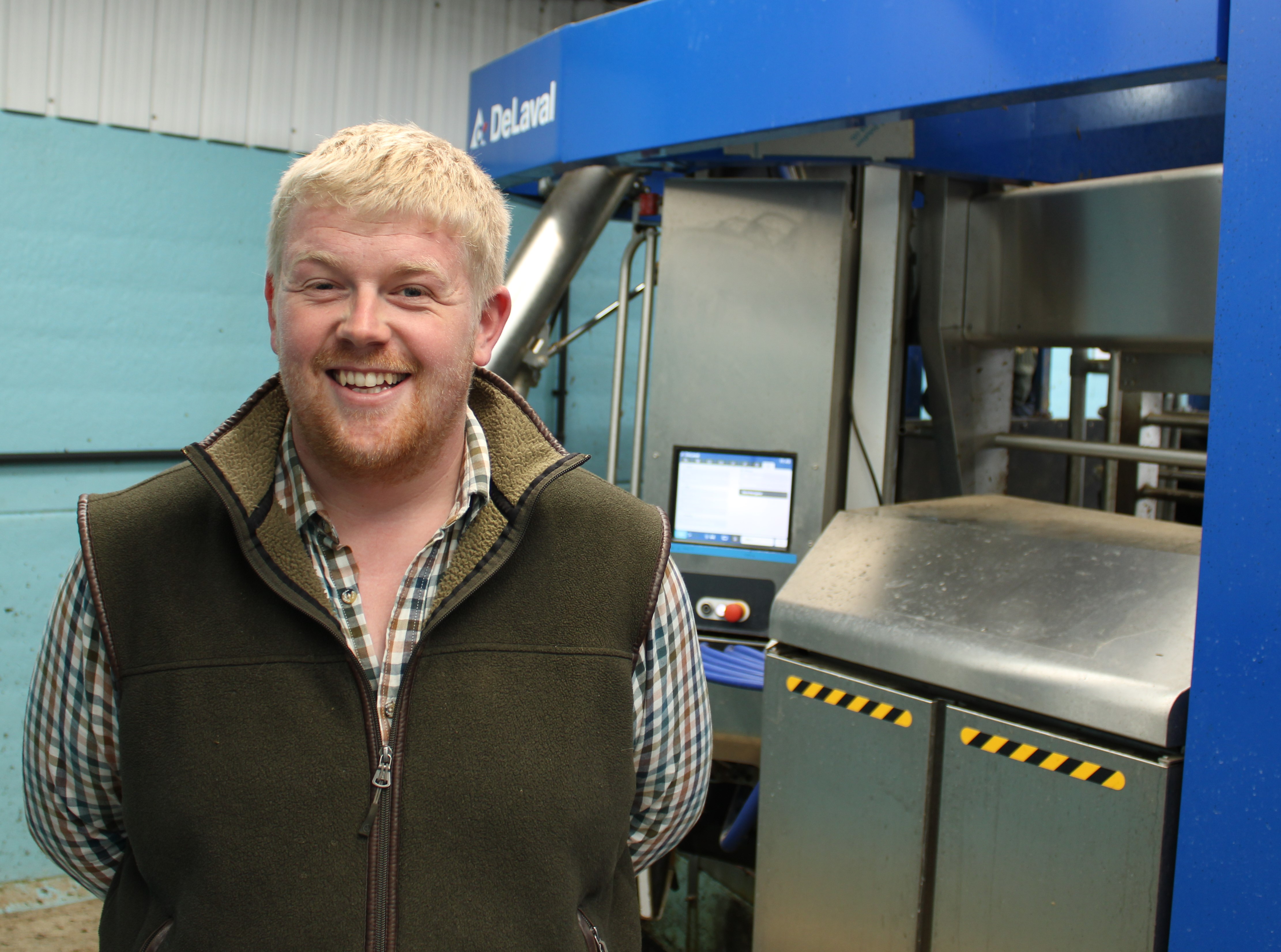
Ross Johnson farms 267 acres, with his father Colin and uncle Robin, at Low Whinholme Farm in Yorkshire. The mixed herd of 150 cows, with 130 in milk, were moved to DeLaval VMS robotic milking when he replaced a DeLaval 12/24 swingover parlour. Mr Johnson wanted to keep the cows out whilst improving cow health and increasing milk yield, so a 3-way system was implemented when the robots were installed.
“We are more than two years in now and still learning every day. Robots have given me the opportunity to experiment with our farming system by automating milking and providing data to help me concentrate on making the most of our forage,” he explains.
He confesses that when he was offered the opportunity to go into the family partnership, he did so on the proviso that robots would do the milking.
“We had nobody else to milk, my uncle was doing it all, and I didn’t want that life. However, I also had a great deal of appreciation and respect for the farming system he and my father had built, so I wanted to find a hybrid model,” he says.
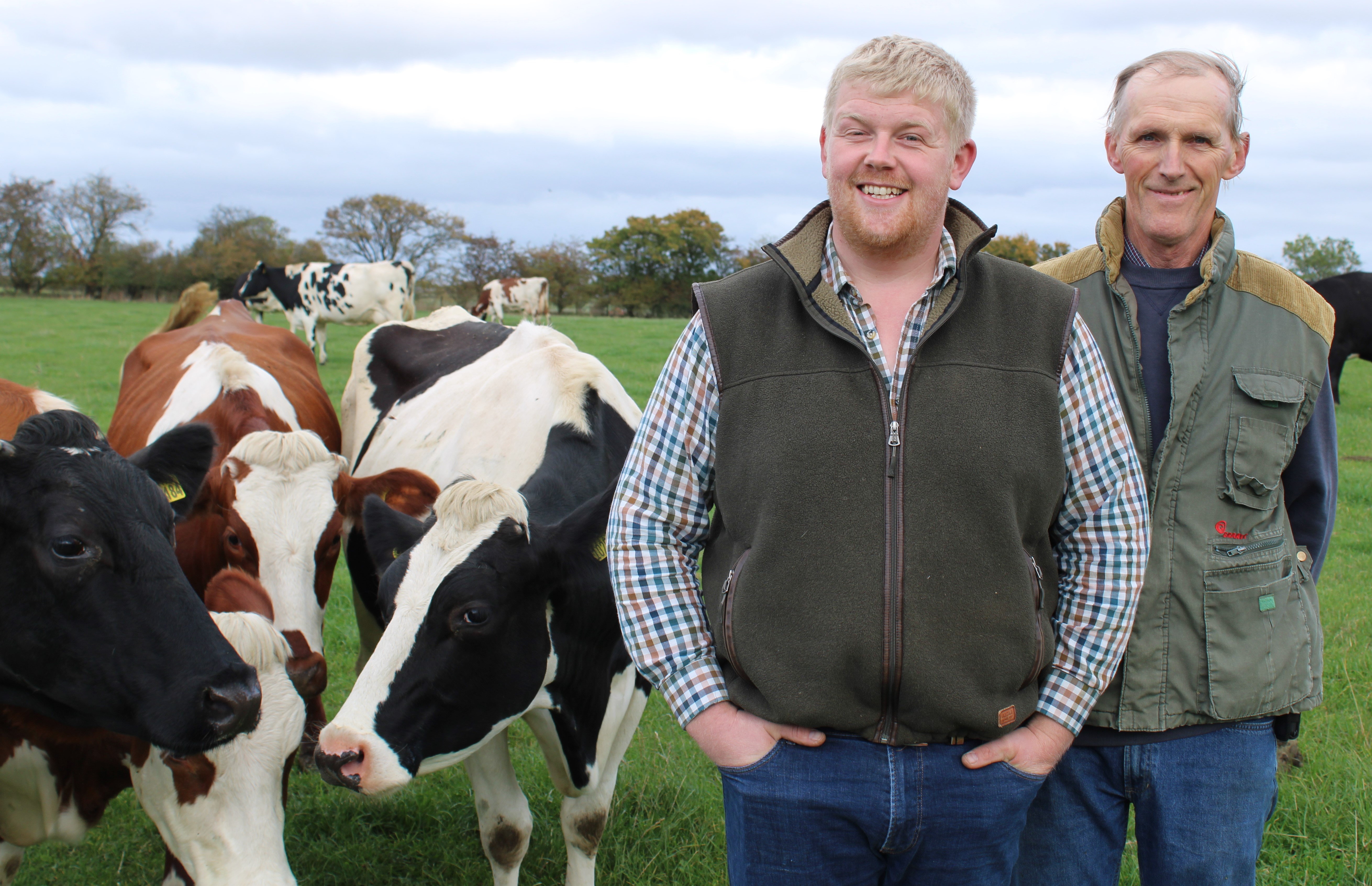
The farm grows good grass, with spring protein content around 22% providing yields of 25 litres per cow per day (8000 litres per cow per year). A mixed herd, Mr Johnson describes the cows as smaller and hardier than the typical Holstein chosen for robot milking.
“The cows are cross breeds that suit grazing and provide a good yield with low inputs,” he adds.
And this is where the system becomes both interesting and complicated. He suggests that the robots were a significant investment and one the farm will have to work hard to realise the benefit from. However, he has the time and the data to make the adjustments needed to reach his goals.
“I could have just carried on farming in the same way, but the robots were the catalyst to push for better yields and optimise our system. We have three robots, and I am learning to get more out of them by how I separate the herd.”
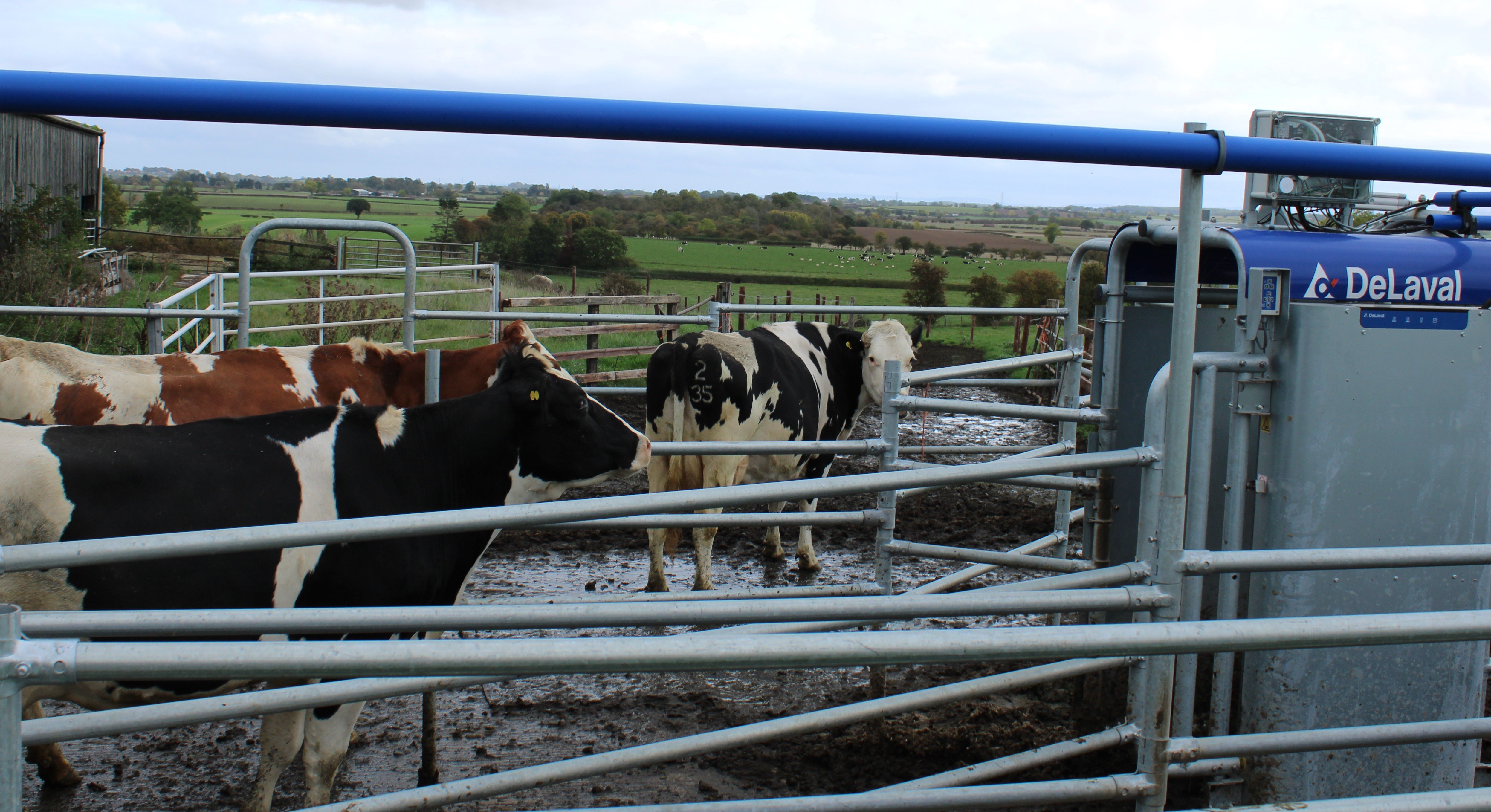
With the robots separated over two sheds, he has allocated one to his high yielding cows and two for the remainder of the herd. The higher yielding cows are housed for approximately 150 days of lactation. Following this, cows move to the second barn and the three-way A, B, C grazing system.
“We want to maximise milk yield during early lactation, and thankfully we have the silage to do it. However, it is also good for the cows to be out, and we think it is important to provide a balance between milking and welfare.”
This approach has seen improvements in cow health, with very few foot problems, a SCC count hovering around 100 and hardly any mastitis cases.
“Before the robots our SCCs were much higher and we had recurring issues with mastitis. The four quarter milking offered by the robots is better for teat health and also draws more milk, which makes for a win win.”
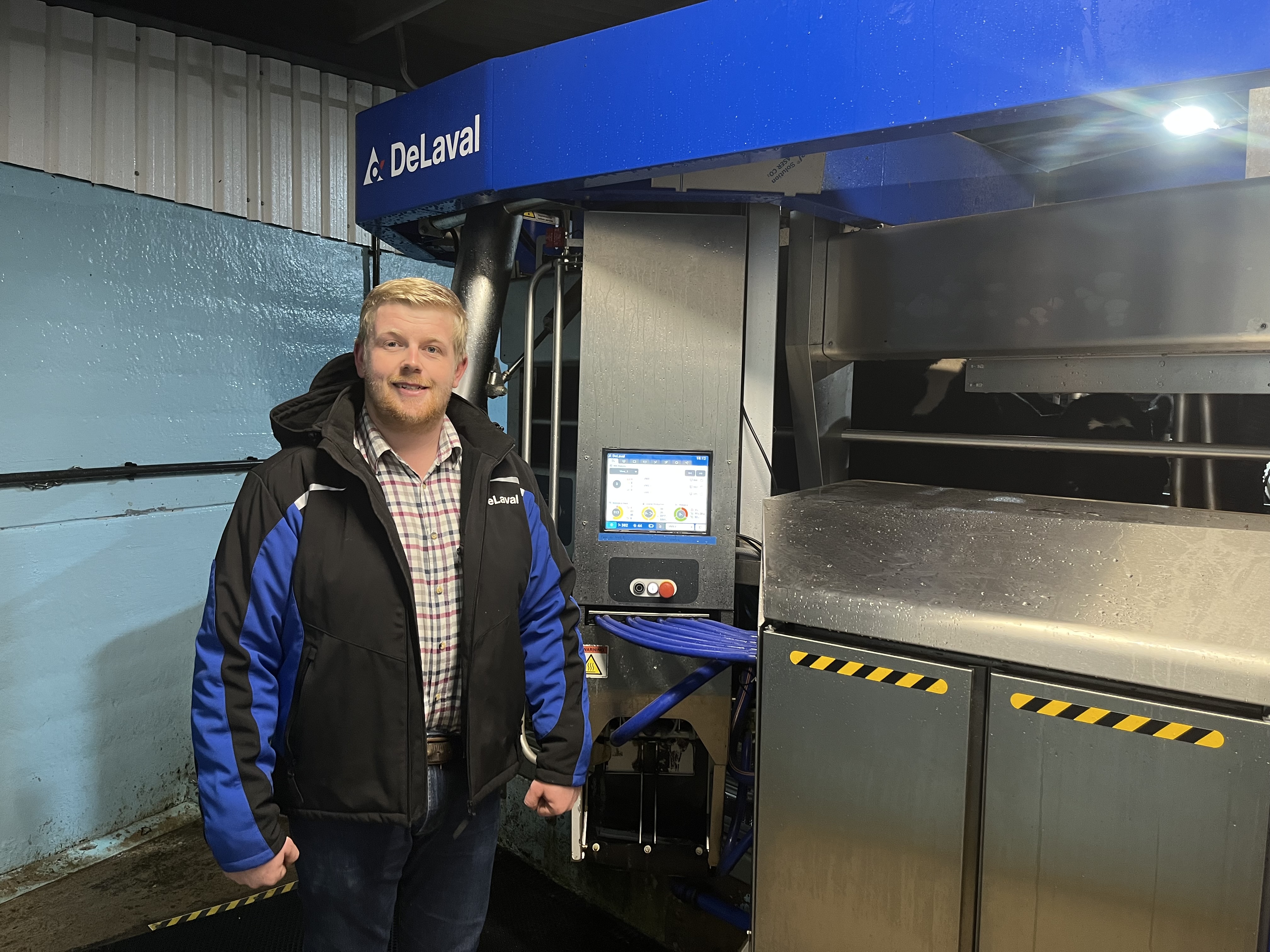
His grazing system, designed by DeLaval, sees cows have free access to the robots and pasture. Most cows, following a visit to the robot in the morning, go out to pasture A and return for a second milking before moving to pasture B. Rather than have a third pasture area, Mr Johnson has chosen to buffer feed in C. This, he believes, is driving yields whilst enabling the cows to spend more time outside.
“We have to drive yields because the robots are a significant investment and overhead for the farm. We have the silage, so I see it as a hybrid arrangement that gives the cows more time outside and the farm more milk.”
He admits he always understood that this drive for higher yields was part of the new system.
“Running three robots and having a 20-litre average per cow per day doesn’t work, I knew we needed more milk to make this system work, but I didn’t want to increase our other overheads to achieve this.”
He explains that, before the robots, there would be no need to run a diet feeder in the spring and early summer because the cows were out. Having some cows in means there is more work, but it is still a fraction compared to feeding the whole herd all year.
“Keeping high yielding cows in for early lactation and the grazing system with buffer feeding in our C area is easy to manage and it is yielding 15 percent more milk and rising. However, we have noticed mid lactation cows dropping off when they go out, so the next challenge is managing their diet.”
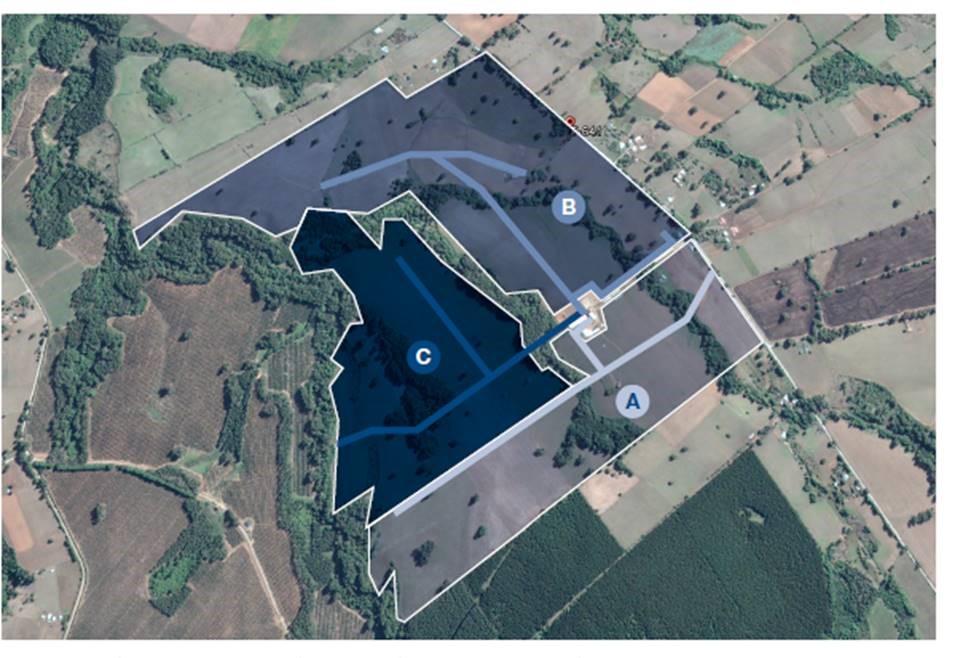
He grazes 55 of the 260 acres on the farm. The 55 is split into paddocks with area A totalling 25 and area B 30 acres. The third area (C) is in the shed and used to buffer feed silage.
“I am comfortable with the system. The cows all get time outside and we are driving up yields to make the most of the robots. However, I think I could achieve this more efficiently by moving to autumn block calving.”
He suggests that if he were to move from year-round calving to block calving in autumn, he could combine winter housing with early lactation to maximise his winter yield, whilst allowing more cows to graze in the spring and summer months.
“I think this would be the best of both worlds. We would be maximising milk from the herd in early lactation, running the diet feeder for a shorter period, providing the cows with more time out and making better use of forage. It will be a big change to block calve but I think it will be a worthwhile experiment, we’ll see,” he concludes.
For more information on DeLaval VMS robotic milking and grazing, Click Here